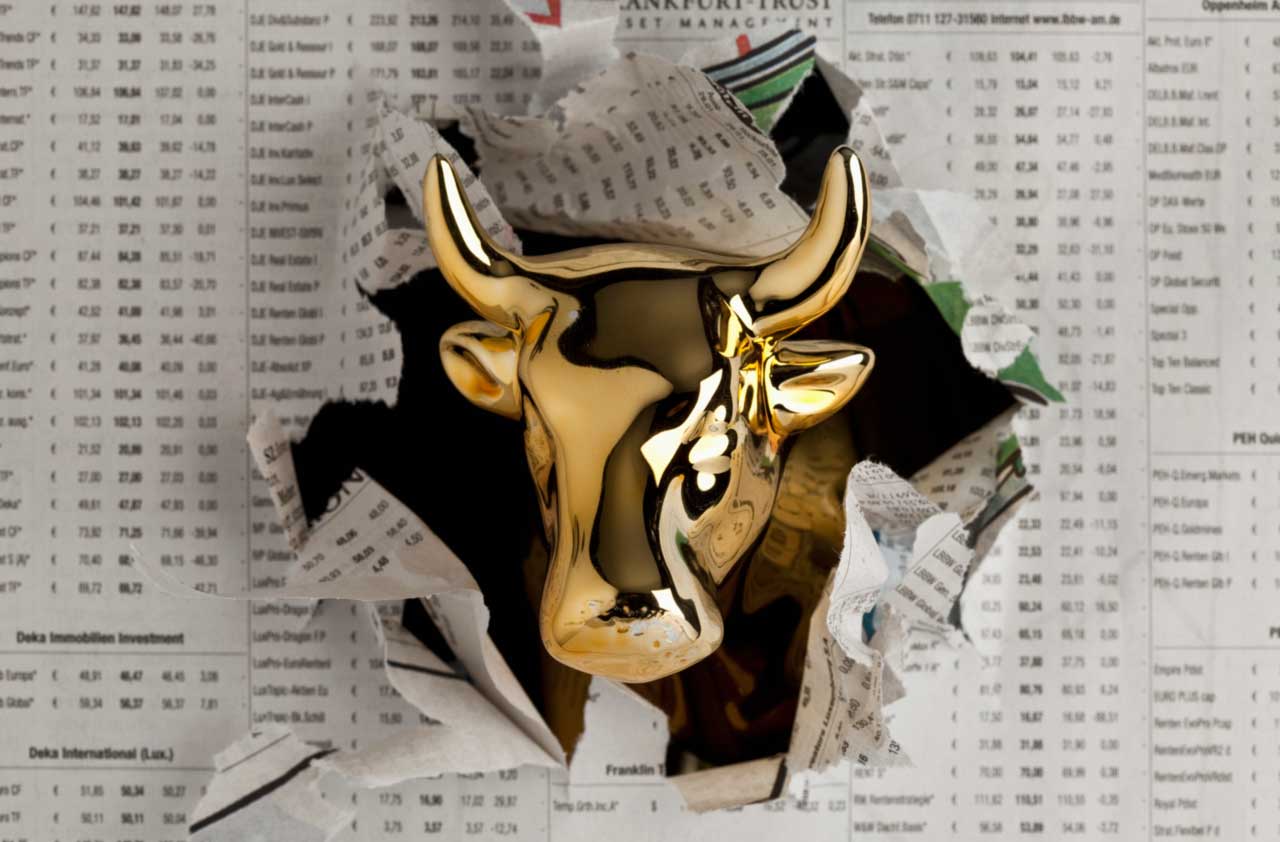When Will the Dow Hit 50,000?
The freight train ride that stocks have taken investors on has many wondering.


The Dow Jones industrial average index (DJIA) opened 2018 just shy of 25,000 on Jan. 2, and a little over two weeks later it already had topped 26,000. I was recently asked when I thought the Dow would reach 30,000. Since stocks are the long-term piece of an investor’s portfolio I think this question misses the mark. The better question is, when will the Dow double to hit 50,000?
First a comment about the index. This DJIA is made up of 30 large-company U.S. stocks. In general, it gives investors a rough idea of how the U.S. stock market is doing. However, since it is composed of only large-company U.S. stocks, it’s really only a good barometer for how large-company U.S. stocks are doing, not all stock categories (small & mid-cap stocks, international stocks, etc.). Because most people are familiar with the index, we often use it to put us in the ballpark when gauging the stock market’s performance.
A ballpark answer: Seven to 10 years
The DJIA needs to rise by 20% to hit 30,000. Another year like 2017 would get us to 30,000. In 2017 the DJIA rose 4,957 points, or 25%. Even if the market’s rise slows, I believe the DJIA will hit 30,000 in the next one to three years, and 50,000 in the next seven to 10 years. If capitalism works, as I believe it does, it wouldn’t be much of a stretch to see this occur. Let's dig deeper.
From just $107.88 $24.99 for Kiplinger Personal Finance
Become a smarter, better informed investor. Subscribe from just $107.88 $24.99, plus get up to 4 Special Issues

Sign up for Kiplinger’s Free Newsletters
Profit and prosper with the best of expert advice on investing, taxes, retirement, personal finance and more - straight to your e-mail.
Profit and prosper with the best of expert advice - straight to your e-mail.
For a moment let's ignore the economy, the geopolitical landscape and fiscal policy and just focus on the simple math at hand. Let's review the “Rule of 72.” The Rule of 72 is a way to determine how long it will take for an investment to double in value. Here is how it works. Simply take an investment’s growth rate and divide it into the number 72. The result equals the length of time it will take your money, or in our case, the index, to double.
For example, the DJIA has enjoyed an annualized increase of 7.33% since 1950, based on Yahoo Finance historical data. If we divide 72 by the number 7.33 (our historic annual rate of return) we get 9.82. So, at a 7.33% annualized increase the DJIA will double every 10 years (9.82 years, to be exact). If we continue at our 1950-2017 pace, the DJIA index will double, or hit 50,000, in 10 years.
Your investments could grow even faster than Dow
Although the DJIA may take 10 years to double, the money you invest in DJIA stocks should double faster than that. Remember, the DJIA measures stock price changes. It does not also include the dividends DJIA stocks pay. Currently, the DJIA stocks pay about a 2% dividend, according to Yahoo Finance. For example, if you bought into the DJIA by investing $10,000 into the SPDR Dow Jones Industrial Average Index ETF (Symbol: DIA) from 2008-2017 it would have grown to $23,967 if you had dividends reinvested, and only $18,670 without reinvested dividends.*
What are the chances the DJIA will double in the next 10 years? To answer this question I looked back and measured each 10-year period from post-World War II until now.** Out of 64 10-year periods, the index doubled in 31 of them, or about half of the time (48%). The best 10-year period ended in 1998, providing a 10-year annualized return of 15.5%, while the worst 10-year period ended in 1974, producing a negative 3.4% annualized return. Of course, past average performance (7.33%) is no guarantee of future results. There has been a major variation depending on the time period you measure. The longer you have to invest, the more likely you are to have a better average return.
The bottom line for investors
I like to look at stocks as my long-term money (money I don’t plan on spending for 10 or more years.) Consequently, I am not really concerned about where the DJIA Index is in two to three years, or when it may hit 30,000, but rather where it will be in 10 years or beyond. Because I believe capitalism will continue to work, I believe companies will continue to make money and stocks will continue to rise. If the DJIA index continues at its average 1950-2017 rate, it will reach the 50,000 mark sometime around 2027-28.
*Morningstar Office
**The first rolling 10-year period measured was from 1945-1954
Profit and prosper with the best of Kiplinger's advice on investing, taxes, retirement, personal finance and much more. Delivered daily. Enter your email in the box and click Sign Me Up.

Ray LeVitre is an independent fee-only Certified Financial Adviser with over 20 years of financial services experience. In addition he is the founder of Net Worth Advisory Group and the author of "20 Retirement Decisions You Need to Make Right Now."
-
 What to Do If You Plan to Make Catch-Up Contributions in 2026
What to Do If You Plan to Make Catch-Up Contributions in 2026Under new rules, you may lose an up-front deduction but gain tax-free income once you retire.
-
 If You'd Put $1,000 Into Lowe's Stock 20 Years Ago, Here's What You'd Have Today
If You'd Put $1,000 Into Lowe's Stock 20 Years Ago, Here's What You'd Have TodayLowe's stock has delivered disappointing returns recently, but it's been a great holding for truly patient investors.
-
 How to Max Out Your 401(k) in 2026 (New Limits are Higher)
How to Max Out Your 401(k) in 2026 (New Limits are Higher)In 2026, the maximum contribution limits for 401(k) plans have increased, giving you an excellent shot at maximizing your retirement savings.
-
 8 Practical Ways to Declutter Your Life in 2026: A Retirement 'Non-Resolution' Checklist
8 Practical Ways to Declutter Your Life in 2026: A Retirement 'Non-Resolution' ChecklistHere's how to stop wasting your energy on things that don't enhance your new chapter and focus on the things that do.
-
 To Retire Rich, Stop Chasing Huge Returns and Do This Instead, Courtesy of a Financial Planner
To Retire Rich, Stop Chasing Huge Returns and Do This Instead, Courtesy of a Financial PlannerSaving a large percentage of your income, minimizing taxes and keeping spending in check can offer a more realistic path to retiring rich.
-
 New Year, New Retirement Rules: Here's How You Can Keep Up as the Landscape Changes
New Year, New Retirement Rules: Here's How You Can Keep Up as the Landscape ChangesFor a successful modern retirement, prepare for a longer life, manage high health care costs and prioritize your social life and purpose.
-
 Stocks End Volatile Year on a Down Note: Stock Market Today
Stocks End Volatile Year on a Down Note: Stock Market TodayAfter nearing bear-market territory in the spring, the main market indexes closed out the year with impressive gains.
-
 7 Creative Ways to Spend Less and Save More In Retirement, Courtesy of a Financial Pro
7 Creative Ways to Spend Less and Save More In Retirement, Courtesy of a Financial ProWorried you won't have enough money later in life? Try redesigning your vision of retirement, and you may find your savings go further than you thought.
-
 I'm an Annuities Pro: This Is How You Can Cover the Income Gap While Your Social Security Benefits Grow
I'm an Annuities Pro: This Is How You Can Cover the Income Gap While Your Social Security Benefits GrowTaking Social Security later results in higher future income, but that can create an income gap. Annuities can boost income until you file for benefits.
-
 Stocks Extend Losing Streak After Fed Minutes: Stock Market Today
Stocks Extend Losing Streak After Fed Minutes: Stock Market TodayThe Santa Claus Rally is officially at risk after the S&P 500's third straight loss.
-
 I'm a Financial Pro: You Really Can Make New Year's Money Resolutions That Stick (and Just Smile as Quitter's Day Goes By)
I'm a Financial Pro: You Really Can Make New Year's Money Resolutions That Stick (and Just Smile as Quitter's Day Goes By)The secret to keeping your New Year's financial resolutions? Just make your savings and retirement contributions 100% automatic.